My analysis and summaries of weekly readings for my uni class. Portions of this site and the works within it are being produced with the intention of critique and/or educational use under Australia's 'fair dealing' exceptions to copyright (Section 40 & 41). However, if you feel your IP is being infringed, please contact my service provider (tumblr) with the appropriate DMCA requests, as I, the single author take full responsibility for the content of this site.”
Don't wanna be here? Send us removal request.
Text
Week 10: Digital Citizenship and Social Media Conflict
Social media has become a place where people are able to express themselves and share their lifestyle on a platform. But, since its introduction social media has become a platform were online harassment and negative behaviour is prevalent.
Social media harassment often details the online activity of “being called offensive names”, “being embarrassed”, “physically threatened", “being sexually harassed”, “being harassed over a long time”, being hurt by a “romantic partner”, “being impersonated, spreading damaging rumors”, “encouraging” the harassment of others and “attempting to hurt the victim in person after online harassment” (Marwick et al 2018, pp. 545). Unfortunately as seen in this week’s readings women are often harassed online and there are many ways in which they can receive this harassment. Marwick and Caplan (2018, p. 545) further detail how harrassment comes in many forms whether it be “pejorative language; doxing; death threats; revenge porn; cyberstalking; and other threatening behavior”.
Revenge porn and the overall spreading of women’s nude photos has become a talked about topic. Meg Groff’s viral Tik Tok about the sharing of women’s nude photos through the analogy of a sandwich has over five million views. She details about how revenge porn is plaguing the younger generations and how her video is "shown from the perspective of a woman being the victim of an incident” because she has noticed a “pattern” of women in “particular being shamed for expressing themselves as sexual beings” (Torres 2021). But she also highlights how it applies to all genders and how people’s bodies should not ever be used against them.
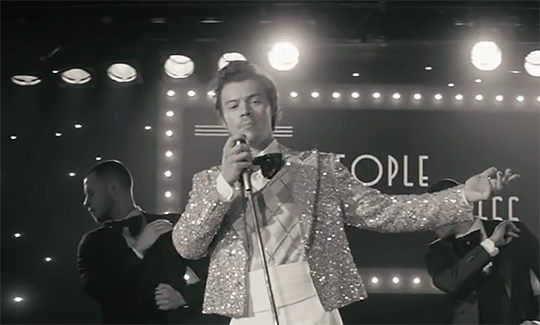
Another example of online harassment is gaslighting which is subtle and often affects a person’s view of themselves. Cambridge (2021) defines gaslighting as a form of “psychological abuse” where an individual is “tricking or controlling someone by making them believe things are not true”. Gaslighting is becoming more prevalent in the media as it focuses on “violence against women” and “what constitutes abuse” (Gleeson 2018). The overall term also details how often these demoralising words often stereotypes women into cliches.
Regulation is often an issue amongst social media platforms due to the site’s content having the ability to become viral quickly. Often videos or photos are able to be reposted despite being reported or taken down. There are many instances on Tik Tok where a video is posted and people have reported it and it somehow meets the app’s guidelines. This highlights how regulation needs to be improved in order to protect these online users. Victims of online abuse need to know their rights. In Australia there are no pieces of legislation against online bullying and or online abuse in place. Only a number of acts in order to protect the victims.
People need to be educated on the different forms of online abuse and harassment. They need to be not only able to identify it but they also need to be aware of their rights. Social media is a digital community in which people are able to connect and communicate with people who share their same interests. If users could only bring a level of kindness and love online it can become a positive platform.
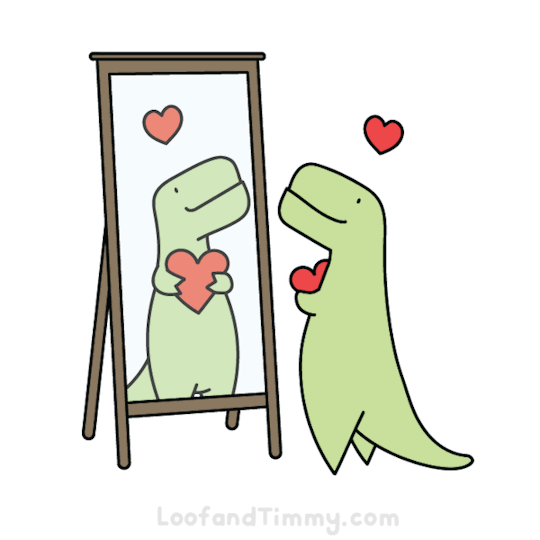
References:
‘Gaslighting’ 2021, in Cambridge Dictionary, viewed 16th May 2021 <https://dictionary.cambridge.org/dictionary/english/gaslighting>.
Gleeson, J 2018, 'What does Gaslighting Mean?' The Conversation, 6 December, viewed 16th May 2021, <https://theconversation.com/explainer-what-does-gaslighting-mean-107888>.
Marwick, A & Caplan, R 2018, 'Drinking male tears: language, the manosphere, and networked harassment', Feminist Media Studies, vol. 18(4), pp. 543-559.
Torres, K 2021, This Girl’s Sandwich Analogy About Sharing Nude Photos Is Going Massively Viral, Buzzfeed, viewed 16th May 2021, <https://www.buzzfeed.com/kristatorres/sandwich-analogy-nudes>
4 notes
·
View notes
Text
Week 9: Social Media Influencers and the slow fashion movement
Cambridge (2021) defines digital citizenship as utilising the internet as a way to "communicate with others, buy and sell things, and take part in politics, and understanding how to do this in a safe and responsible way”. Many influential figures on social media platforms, such as Instagram, utilise their platforms as a way to promote and endorse products. In many instances, their followers believe that it is the influencer’s responsibility to promote and support ethical products.
The slow fashion movement has been around since counterculture of the 1960s and is heavily linked to “sustainability” and how it is becoming more of a “priority for many fashion organisations” (Lai et al 2017, p. 19). Social media has become a platform in which influential figures promote and educate their followers on the importance of supporting the slow fashion industry. Slow fashion concept itself focuses on “sustainability” as well as the fashion “[designs] incorporating high quality, small lines, regional productions, and fair labor conditions” (Pookulangara et al 2013, p. 201). Many influencers today, whether it be via YouTube or other social media platforms, promote and accentuate their love for upcycling, thrifting and swapping clothes between friends and family. These influential people are utilising their platform to highlight how important it is to be involved in the slow fashion movement.

(screenshot from Instagram)
There are many popular clothing trends circling on Instagram and social media as a whole. One of these trends is getting cheap trendy clothes from online clothing stores. People have been purchasing and accepting sponsorships from brands which are deemed as fast fashion and are unethical and unsustainable. An example of a popular, trendy and unethical fast fashion brand is Shien. Shien has been rated as “very poor” in terms of its “environmental impact” and “labour conditions” (Good On You 2021). Despite these ratings influencers still promote and accept sponsorships from this brand. This has resulted in many of their followers commenting on their sponsored post as a way to educate these influencers on the importance of not supporting fast fashion.
There are many suggestions people have been making on how to support and the slow fashion movement. In order to be sustainable people it is important to consider alternatives on buying clothes from cheap brands. Thrifting and upcycling clothes is now a current trend. Emma Chamberlain who is a highly popular YouTube personality and Instagram influencer is known for her thrifting. She is consider extremely influential in the fashion industry because of her following. With Emma as an example, it highlights how important it is for influencers to be aware of the impact they can make on the people they follow. With Emma talking and vlogging about thrifting she has aided in making it popular and trendy. Thrifting as a whole alongside upcycling has become extremely popular and this has become a way for people to find a clothes to avoid these fast fashion brands.

References:
‘Digital Citizenship’ 2021, in Cambridge Dictionary, viewed 9th May 2021 <https://dictionary.cambridge.org/dictionary/english/digital-citizenship>.
Good On You, 2021, How Ethical is SHEIN?, Good On You, viewed 9th May 2021, <https://goodonyou.eco/how-ethical-is-shein/>.
Lai, Z, Henninger, C, Alevizou, P & Cham, J 2017, ‘An Exploration of Consumers’ Perceptions Towards Sustainable Fashion – A Qualitative Study in the UK’, Springer International Publishing Sustainability in Fashion, pp. 81-101.
Pookulangara, S & Shephard, A 2013, ‘Slow fashion movement: Understanding consumer perceptions—An exploratory study’, Journal of retailing and consumer services, vol. 20 (2), pp.200-206.
0 notes
Text
Week 8: Gaming communities, Social Gaming and Live Streaming
Video games have become more social due to online communities becoming more prevalent in today’s society. Taylor (2018, p. 6) highlights the growth of the video game community and how Twitch and live streaming enables people to share their play with others. This has allowed people to connect and communicate with people who share the same interests as their own.
Social gaming itself grew in the late 2000s to the early 2010s. It utilised technology as a way to “enable social interaction among players” by utilising “competitive, cooperative and competitive- cooperative activities” (Gong et al 2019, p. 1). These games allow people to create friendships online despite geographical barriers. Games are able to form online relationships via the “exchange virtual gifts or coins, and play as a member of guild” on the game (Gong et al 2019, p. 1).
Similarly to traditional gaming, online gaming “encourages” and “[facilitates] social interactions between players” and creating “friendship” (Kowert et al 2014, p. 385). However, these online games have allowed people around the world to interact and communicate about gaming. An example of this is the mobile game Among Us which became popular during September of 2020. The game had attracted “more than 85 million players” during late 2020 and allowed people to play online together despite being all over the world (Stuart 2020). This highlights how despite lack of face-to-face communication people were still able to communicate and connect with people who were playing the same game. Therefore, creating digital communities.

With live streaming through apps like Twitch and YouTube, people are not only able to play video games but are able to watch other people do it alongside them. Communities are not only able to form around the content but can also be formed around the streamer. This highlights how people utilise social media and these digital communities as a way to create friendships despite being strangers.
Therefore, online gaming is a public space because it allows people to talk to people who play the same games as them and therefore creates a community.
References:
Gong, X, Zhang, K, Cheung, C, Chen, C & Lee, M 2019, ‘Alone or together? Exploring the role of desire for online group gaming in players’ social game addiction’, Information and Management, vol.56, pp. 1-12
Kowert, R, Domahidi, E, Festl, R & Quandt, T 2014, ‘Social gaming, lonely life? The impact of digital game play on adolescents’ social circles’, Computers in Human Behaviour, vol.36, pp. 385-390
Stuart, K 2020, Stuart, K 2020, Among Us: the ultimate party game of the paranoid Covid era, The Guardian, viewed 1st May 2021, <https://www.theguardian.com/games/2020/sep/29/among-us-the-ultimate-party-game-of-the-covid-era>
Taylor, TL 2018, ‘Broadcasting ourselves’ (chapter 1), in Watch Me Play: Twitch and the Rise of Game Live Streaming, Princeton University Press, pp.1-23
0 notes
Text
This post highlights how important it is for people to realise their natural beauty and how social media is an illusion. I believe that it really relates to this week’s and last weeks topics because it emphasises how people should not feel the need to look like the people they see on Instagram
Just in case any of you guys ever feel ashamed of your own body or like there’s something"wrong" with you for not looking like Instagram models…
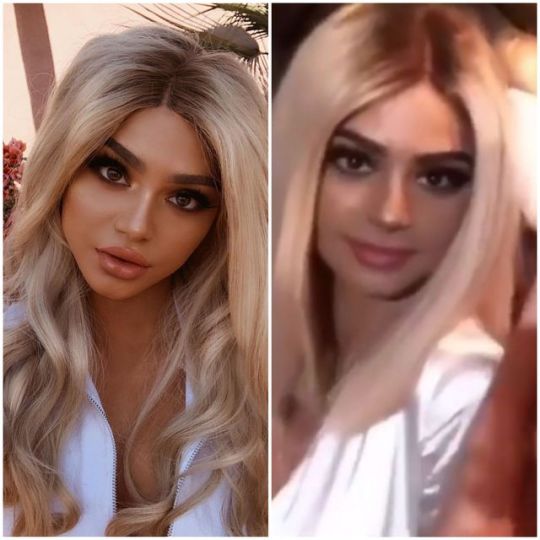
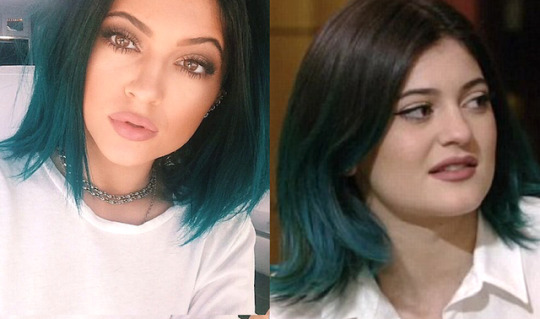
It’s an illusion. Made up. Not real, but instead carefully cultivated to make women feel bad about themselves so they’ll spend $$$ trying to achieve unattainable looks.
People underestimate the extent of Photoshop used on seemingly amateur Instagram models- for more about that, check out the subreddit Instagram vs. Reality. It completely shattered my perception of beauty, and I regretted the wasted time- all those years I spent thinking I was shameful or wrong for not measuring up to these unrealistic standards, wasting money on junk science beauty and weight loss products, beating myself up because I’d been so expertly shown a reality designed to lead me to just that behavior.
But it wasn’t reality. It was a multi-billion dollar industry trying to present a false reality for profit, manipulating the young, vulnerable, and extremely impressionable. Targeting them on purpose. There’s a reason Instagram modeling is lucrative- that’s where they reach young women, young girls still trying to understand their role and expectations in this world. And as a bonus, these young women are likely perceiving the model’s product “recommendations” as made in good faith, not realizing the model doesn’t use the product, not realizing the product won’t change anything about them- except maybe make them feel more broken that the supposed “fix” didn’t work for them.
It’s gross our society continues to do this to impressionable young women. You guys are seriously beautiful and perfect as you are, and I know it’s hard to believe that through all the bullshit messaging thrown at you by advertisers, and all the toxic attitudes and ideas your family and peers normalize, but you are not shameful or ugly for not looking like people who don’t even look like themselves. We are just being manipulated to feel that way in hopes we will squander away our hard earned money trying to chase the impossible, spending our whole lives without truly accepting & loving ourselves.
I don’t know about you guys, but I refuse to buy into it, and I sure as hell refuse to go along pretending like it’s normal instead of predatory and deceptive and outright emotionally abusive. I don’t accept the beauty industry using emotional abuse and manipulation for profit, and I won’t let them pretend that these actions haven’t had massive negative implications for entire generations’ mental health and emotional stability. I won’t pretend that a generation of mother’s more obsessed with their own all-consuming shame of “inadequacy” than presenting a healthy relationship with body image for their daughters, than noticing the toxic patterns and ideas that they are reinforcing for her, isn’t going to have a long-term impact on society. I won’t pretend that they don’t continue to profit off exactly this fact, the fact that their abuse perpetuates itself and primes more women to buy into their lie, the fact that they lead women to do such a huge disservice to the daughters they no doubt love & want better for. The fact that peers and media and even advertisements are participating in this false reality, inflating it to a level that can’t be easily dismissed, because the fact is it’s alienating to live in a different reality than the people around you.
Actions and words matter, even those made by advertising agencies, and they impact our society for decades. It’s not a single drop in the ocean, it’s a ripple effect that turns tsunami. I’m done pretending otherwise just because that’s what the people with money want us to think. I think it’s about time we started holding them accountable.
157 notes
·
View notes
Text
Week 7: Digital Citizenship and Software Literacy - Instagram Filters
Beauty filters have altered the way people perceive themselves in comparison to society’s new beauty standards. Coy-Dibley (2016, p. 2) highlights how “image-editing technology” allowed people changes their appearance in order to meet society's “standard” and reveals how these filters can lead to “digitised dysmorphia”.
Filters on Snapchat and Instagram have overtime become an important aspect of both social media platforms. Filtering itself is a “technique for modifying or enhancing an image” by improving its “improving the visual appearance of an image” (AlShehri 2020, p. 298). These filters create an augmented reality by allowing users to “see the real world, with virtual objects superimposed upon or composited with the real world” (Azuma 1997, p. 2).
Instagram has recently released filter, ‘Reality vs Filter’, on their app to reveal how people look with the filter vs naturally. This filter however has been deemed harmful due to its execution. Actress Jameela Jamil highlights how filters are often “racist in their presumption that a tiny Eurocentric nose and light eyes and a skinny (often lighter) face is the ultimate standard of beauty" (Prance 2021). She believes that these filters are damaging young people’s self esteem and also points out the increase in cosmetic surgery. Due to these filters people now go to cosmetic surgeons and utilise these filters to show what they would look like without their “perceived flaws” (Youn 2019, p. 2).

Alongside these filters on these social media platforms, there are apps which allow the user to alter and edit their face and body. Apps such as Facetune and Perfect365 allows people to alter their appearance whether it be via retouching, reshaping or altering/ adding colours. They are able to change the colour of hair or eyes, add or brighten makeup, remove blemishes and change their body or face shape. This allows users to change the way they look and adjust aspects of themselves in order to meet societal expectations.
However, using these filters are not always negative. These filters can allow people to feel more confident in themselves. They also provide people with the opportunity to see what they would look like with a different hair colour or piercings without the commitment. But, the conversation about the harm of utilising the filters frequently needs to continue to be talked about and in the spotlight. Therefore ensuring that people are becoming more educated on how people should not feel required to use filters because they need to meet societal norms and expectations.
References
Azuma, R, 1997, ‘A Survey of Augmented Reality’, In Presence: Teleoperators and Virtual Environments, vol 6 (9), pp. 1-48
Coy-Dibley, 2016, ‘“Digitized Dysmorphia”of the female body:the re/disfigurement of the image’, Palgrave Communications, pp. 1-9
Prance, S, 2021, Filter vs Reality filter goes viral on Instagram for exposing unrealistic beauty standards, Popbuzz, viewed 24th April 2021, <https://www.popbuzz.com/internet/social-media/filter-vs-reality-filter-instagram-how/>
Youn, A, 2019, ‘What is the Ideal Instagram Filter?’, Aesthetic surgery journal, vol. 1, pp. 2-8
0 notes
Text
Week 6: Digital Citizenship and Health Education - Body Modification on Visual Social Media
Social media in current society has transformed from a simplistic platform where people share their raw daily lives into a platform full of influential figures who seemingly live a perfect lifestyle. It has become “ubiquitous in the world of plastic surgery” and has raised concerns over how influential online celebrities are at creating high beauty standards (Dorfman et al 2018, p. 332).
As time has progressed social media has become a platform which emphasises on having a certain type lifestyle and looking a certain way. This as a result has created unrealistic beauty standards which are often set by social media influencers and other celebrity figures. These figures are able to afford dieticians, personal trainers and cosmetic surgery. This has raised concerns about how the influential figure’s audiences may feel about themselves if they are unaware of the surgeries these people have to look a certain way. Many images of “women’s bodies” or even men’s bodies “on social media platforms are unlikely to include disclaimers regarding digital modification” (Lewis et al 2020, p.251). This then highlights Body Dysmorphic Disorder and how people feel as though they have to look like them to be considered ideal.
An example focused the world is on body image is the Khloé Kardashian bikini picture which has been circling the internet and social media over the past weeks. The image is said to look different to her other pictures online. Khloé as a result posted a series of photos and live streams of her “untouched and unfiltered body” (ABC 2021). Alongside a series of Instagram photos she informs her followers about the “pressure” and “constant ridicule and judgement” that she has faced her “entire life” to look “perfect” (ABC 2021). Khloé for her whole life has been considered the bigger sister. She believes that she has “every right” to ask for her photo to be taken down (ABC 2021). This example reminds society that social media is where you post the best version of yourself and where you look your best.
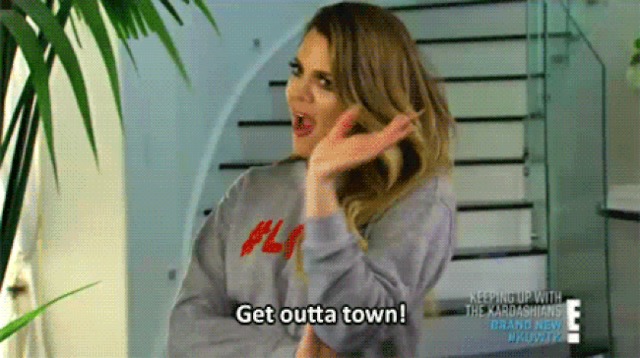
However, in recent years body positivity has allowed people to feel more comfortable in their own skin and be confident in themselves. Instagram has also started to contain “content promoting acceptance of a broad range of body sizes and appearances” (Lazuka et al 2020 p. 92). The singer Lizzo has been very known for speaking online about body positivity and rather being “body normative” and “normalising” all body types (Mamo 2020). Thus, allowing people to feel more confident and embrace the way they look.
References:
ABC, 2021, Kardashian lawyers work to remove image of Khloe from social media. Could it be backfiring?, ABC, viewed 19th April 2021, <https://www.abc.net.au/news/2021-04-08/khloe-kardashian-picture-lawyers-takedown-streisand-effect/100055042>
Dorfman, R, Vaca, E, Mahmood, E, Fine, N & Schierle, C, 2018, ‘Plastic Surgery-Related Hashtag Utilization on Instagram: Implications for Education and Marketing’, Aesthetic Surgery Journal, vol. 38 (3), pp 332–338
Lazuka, R, Wick, M, Keel, P & Harriagar, J, 2020, ‘Are We There Yet? Progress in Depicting Diverse Images of Beauty in Instagram’s Body Positivity Movement’, Elsevier Ltd, vol.34, pp. 85-93
Lewis, N, Pelled, A & Tal-Or, N, 2020, ‘The effect of exposure to thin models and digital modification disclaimers on women’s body satisfaction’, International journal of psychology, vol. 55 (2), pp. 245-254
0 notes
Text
Week 5: What is digital citizenship? Hashtag Publics, political engagement and activism
Platformisation allows people to utilise social media as a way to reach a large audience. The simple blue tick next to a person’s account name highlights someone’s ability to gain a following online via social media.
Social media has increasingly become an important part in people’s daily lives. It has overtaken many means of communication and therefore has replaced other online formats to reach people. An example of social media’s ability to communicate is seen during the 2016 election where people utilised their platforms as a way to support in a certain party or encourage their followers to vote. It also has allowed news to be more “direct” and therefore is able to “bypass the editorial media” (Enli 2017, pp. 52-53). This is seen when Hillary Clinton tweeted that she would be running for president or when Donald Trump utilised his social media to “critique the mainstream media as biased and untrustworthy” (Enli 2017, p. 53). Thus, revealing how influential it is to have a platform.

Utilising hashtags are a way to create a community who are able to further discuss and comment on a certain topic. #Auspol is an example of people trying to “[commentate]” and “rumour [spread” the “machinations of the federal government” (Bogle 2016). Hashtags are also is a great way to inform and educate people on important issues prevalent in society. Therefore, utilising hashtags to create online activism is important. The #BlackLivesMatter was "used roughly 47.8 million times on Twitter" which averaged "just under 3.7 million times per day – from May 26 to June 7" (Anderson 2020). This emphasises how people utilised this hashtag as a way to spread awareness and educate people. As a result, it did facilitate some action and change.

Therefore, social media provides people with the opportunity to create a platform. Whether it be during the elections or trying to make a difference social media is the new way to communicate and get a message across.
References:
Anderson, M, 2020, #BlackLivesMatter surges on Twitter after George Floyd's death, FactTank, viewed 9th April 2020, <https://www.pewresearch.org/fact-tank/2020/06/10/blacklivesmatter-surges-on-twitter-after-george-floyds-death/>
Bogel, A, 2016, #auspol: The Twitter hashtag Australia can’t live without, Mashable, viewed 9th April 2020<https://mashable.com/2016/03/21/twitter-australia-auspol/#4tvfXtsZUEqV>
Enli, G 2017, ‘Twitter as an arena for the authentic outsider’: Exploring the social media campaigns of Trump and Clinton in the 2016 presidential election, European Journal of Communication, vol 32, no 1 pp 50-61
0 notes
Text
Week 4: Digital Community and Fandom - Reality TV
Reality Television is a genre of television which is considered by many as a guilty pleasure. In many instances these shows are highly scripted and produced, yet this genre is still one of the most highly watched genres of television.

Reality TV itself does create and encourage digital publics. Audiences utilise public spheres like online forums and websites as a way for people to communicate about the show’s events but also provides fans with the opportunity to "know what is going on with the celebrities involved in their favourite series" (Graham et al 2011, p. 28). Twitter is an example of platform that allows audiences to utilise hashtags as a way to communicate with people who share similar interests such as #MAFs. Utilising #MAFs creates a space on the public sphere that allows people to discuss social issues raised in the show such as sexism and marriage in today’s society. Therefore, having these places to communicate provides fans with the ability to feel apart of a community.
On the contrary, these micro-celebrities, utilise public spheres in a different way. They utilise public spheres such as social media to maintain their relevance and utilise their new found status to grow their following or gain brand deals and sponsorships.
When people think of a highly televised show that seems unrealistic Love Island tends to fit the category. The show itself is a highly watched UK reality television show and is now being mirrored in other countries. The program itself encourages their audience to interact and vote via social media on a “number of topics” such as “favourite/ least favourite couple”, the “contestants” who “should go on a date”, who “should leave the show” and who gets “preferential treatment” (L’Hoiry 2019). Therefore, unlike other reality television shows, Love Island allows their audience to be active participants and influence the show’s events.

Therefore, reality television creates digital communities and unites fans by allowing them to discuss their favourite show whilst providing these micro-celebrites a way to reach their audience.
References:
Graham, T. & Hajru, A, 2011, 'Reality TV as a trigger of everyday political talk in the net-based public sphere', European Journal of Communication, vol. 26, no. 1, pp. 18–32,
L’Hoiry, X 2019, ‘Love Island, social media, and sousveillance : new pathways of challenging realism in reality TV', Frontiers in Sociology, 4.59
0 notes
Text
Week 3: ‘How does tumblr function as a digital community?’
Tumblr has the ability, due to being an online platform, to connect people and therefore create a digital community. A digital community is an “online community” who are a “distinct” and “bounded group” who are easily “identified, approached, and studied” (Keller 2019).
Tumblr fits into this category because it allows a group of people to interact and communicate with people who share similar interests as them. Social media itself has created the opportunity for people to be themselves and follow and support people with similar interests as them.

Tumblr is a place where people are able to “express [themselves]", “be [themselves]” and “connect with [their] people” (Tumblr 2021). It celebrates creativity and people’s ability to bond over common interests. Users are also able to decide who they follow and interact with. Which as result has united many communities or fandoms to bond over their favourite content. Tumblr also allows users to create as many Tumblrs as they desires, “one for each slice of [their] personality” (Reeve 2016).
Due to the Tumblr’s anonymity it provides users to feel “safer” than other platforms (Keller 2019, p. 8). People are able to share their interests and concerns, therefore allowing people to focus on what is being said rather than who is saying it. An example of the benefits of anonymity can be seen when is discussing feminism and how it allows women to feel protected and sheltered because their identities are hidden. So ultimately users can “say whatever [they] want” whilst eliminating the “fear of it going on your permanent record” (Reeve 2016).

Therefore, Tumblr is a digital community due to the fact that it is simple to find someone’s ideal community. The blogging forum thrives on hashtags as a way to link relevant topics and therefore allows small communities to be formed on such a large social media forum.
References:
Keller, J 2019, ‘”Oh, She’s a Tumblr Feminist”: Exploring the Platform Vernacular Girls’ Social Media Feminisms download’, Social Media and Society, vol.5, no. 3
Reeve, E 2016, The Secret Life of Tumblr Teens, The New Republic, viewed 24 March 2021, <https://newrepublic.com/article/129002/secret-lives-tumblr-teens>
Tumblr 2021, About, Tumblr, viewed 24 March 2021, <https://www.tumblr.com/about>
3 notes
·
View notes